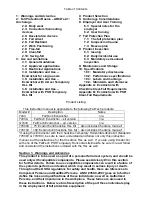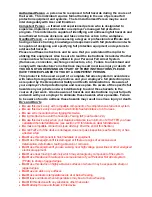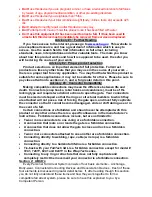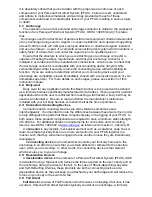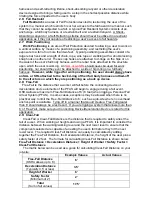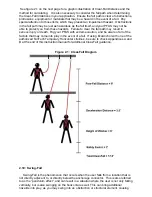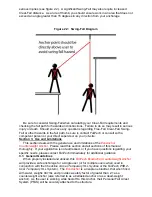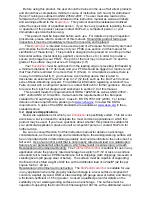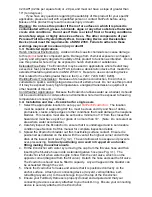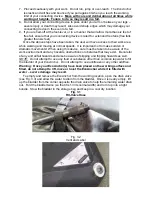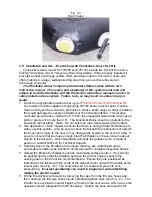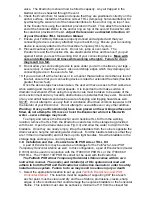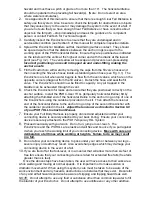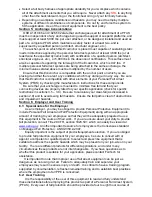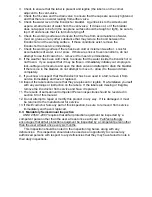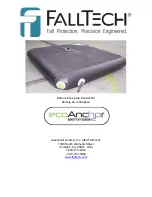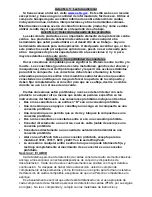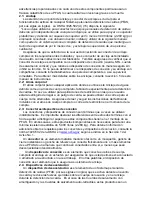
Select a full body harness of appropriate durability for your workplace which contains
all of the attachment elements that you will require. Never attach any
SRL
to anything
other than the back/dorsal d-ring or the front/chest d-ring of your full body harness.
Depending on workplace conditions and hazards, you may need to employ multiple
systems or different combinations of components. Do not try and force the system to
fit the application. Use of the correct equipment is the best policy.
Section 5: Anchorage Considerations
OSHA 1910.66 and 1926.502 state that anchorages used for attachment of a PFAS
must be independent of any anchorage being used to support or suspend platforms, and
must support at least 5,000 lbs. per user attached, or be designed, installed and used as
part of a complete PFAS which maintains a safety factor of at least two, and is
supervised by a qualified person (architect, structural engineer, etc.).
The anchor-point on which this
EcoAnchor
is placed must capable of sustaining static
loads in directions applied by the personal fall arrest system of at least 3,600 lbs (or at
least twice the expected dynamic load) with certification of a qualified person (architect,
structural engineer, etc.), or 5,000 lbs in the absence of certification. This surface must
also be capable of supporting the full weight of the EcoAnchor, which is 947 lbs. If
multiple personal fall arrest systems are being attached to the same anchorage, the
minimum values stated above must be multiplied by the number of users.
Ensure that this
EcoAnchor
is compatible with the anchor point on which you are
placing it and that there aren’t any conditions which may damage it in any way. Be sure
that this
EcoAnchor
is compatible with other elements of your Personal Fall Arrest
System (PFAS) by checking the manufacturer’s instructions for these components.
Be sure that your anchorage is mounted to minimize free fall and that your
connecting devices are properly rated for your specific application (check for specific
restrictions in sections 3.5 – 3.9). Be sure to calculate your clear-fall (as discussed in
section 2.9) and to avoid swing fall hazards. Ensure the fall path is clear of obstructions
and impalement hazards.
Section 6: Employer and User Training
6.1: Special notes for the Employer
As an employer, you may be obliged to provide Personal Protective Equipment (to
include Personal Fall Arrest and Fall Protection Equipment) along with an appropriate
amount of training to your employees so that they will be adequately prepared to use
this equipment in the course of their work. If you are unsure about your duty to provide
fall protection, consult Title 29 CFR, section 1926.501 which can easily be viewed at
www.osha.gov
. Another important resource for employers is the Consensus standard
on Managed Fall Protection: ANSI Z359.2-2007.
Equally important is the subject of product/equipment selection. If you are obliged
to provide fall protection equipment for your employees, be sure to consult with or
appoint a competent or qualified person to select and prescribe equipment that is
suitable to address the specific hazards which may be present on your job-site or in your
facility. There are different products for different applications, and under many
circumstances these products are not interchangeable. If you have questions as to
whether this product is suitable for your application, please contact FallTech for
assistance.
It is important to note that improper use of fall arrest equipment can be just as
dangerous as not using it at all. Failure to adequately train and supervise your
employees may result in serious injury or death. It is critical to have a training program
supported by documentation, refresher/remedial training and to establish best practices
where the employment of all PPE is concerned.
6.2: User Training
It is the responsibility of the user of this equipment to read and fully understand
these instructions before employing this product as part of a Personal Fall Arrest System
(PFAS). Every user of fall protection should be provided a four to eight hour course of

